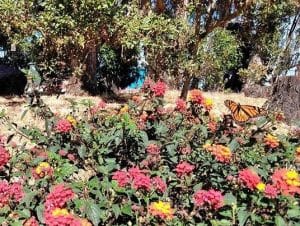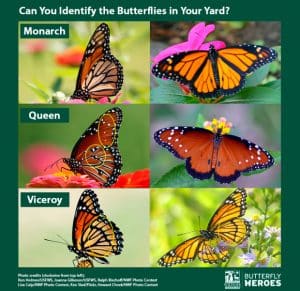Blog
Citizen Science: Monarch Migration
Monarchs have been spotted at CuriOdyssey!
Monarchs are known visually for their brilliant orange hue and large size, but did you know those in North America migrate considerably far each year? Approximately 2,000 miles far, how about that! National Geographic Kids has a page dedicated to monarchs, you can view it here. People have long been fascinated by these butterflies, and as such many groups have begun tracking them!
How can I join in?
Join in these coordinated citizen science projects by checking out the extensive list here. If you do join in, make sure you know the difference between a monarch butterfly and their look-a-likes!
Learn about the monarch’s look-a-likes and take a fun quiz to test your identification skills at this site. If you spot one, please do not disturb these delicate creatures. Perhaps take a moment to appreciate the relatively tiny creature in front of you, and it’s 2,000 mile journey. For more close-up animal and science experiences, view our camp and class listings here.
How can I help monarchs?
“Each fall, millions of monarchs travel from the Rocky Mountains to the California Coast
for warmer weather, breeding and better food, but it can take up to four generations of
them to return to their summer feeding grounds in the Rockies. Using electromagnetic
sensors in their antennae to navigate milkweed patches along the way, they lay their eggs
and die as the next generation carries on to balmier weather.
Monarchs have very specific requirements in their migration. Feeding only on milkweed
plants as caterpillars, and on non-milkweed nectar as butterflies, they require a diverse,
specialized microhabitat. Additionally, their sheer numbers make them easy prey, and
they require extensive cover for protection from birds and other predators.
From late fall to early spring, the many tall trees at Coyote Point Park provide a good
resting spot for the black and orange visitors. Sadly, habitat loss due to our increased
development of critical natural areas is forcing the butterflies to fly further to find good
breeding ground. Additionally, pesticides built into our genetically modified crops are
being dispersed with the plants’ pollen, poisoning monarchs and other insects.
So what can you do to help? To provide habitat for these butterflies, make sure to
plant native milkweed in your garden. Be careful not to plant the tropical milkweed
that is most commonly found in nurseries and garden centers. Recent research that
suggests that tropical milkweed may actually disrupt the natural breeding behaviors
of the monarch butterflies. For this reason, native milkweed is most conducive to the
butterflies’ natural migration. For those who are interested in providing viable habitat for
these creatures, native plant societies can be helpful in offering advice on what types of
milkweed are native to a specific location.”
-Contribution from Eliza Lubetkin, Science Educator (2014).
Thank you for your curiosity!
#CuriOdyssey #SciencePwr
Join the CuriOdyssey Community
LOCATION
1651 Coyote Point Drive
San Mateo, CA 94401
Ohlone Land Acknowledgement
650-342-7755
[email protected]
CuriOdyssey is a 501(c)(3) nonprofit, Tax ID 94-1262434







